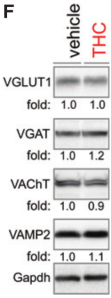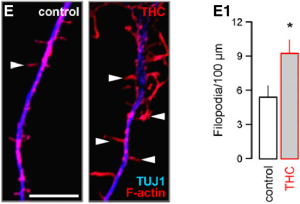Warning: my bias favors recreational & medicinal use of marijuana.
Which field of scientific research is of poorer quality: cannabis or nutrition?
It is honestly hard to say. They are neck and neck.
Why I am drawn to learning and writing about marijuana
At the most basic level it probably has to do with the immense opportunity to make fundamental pharmacological discoveries all the while exploding ancient walking-dead myths. Both opportunities are appealing.
I wanted to write about marijuana and health for some time now. I find it infinitely explorable and quite uncanny in its unremitting relevance to issues plaguing humanity, old and new. Just for a moment, imagine that for some peculiar reason you were to grant yourself a general education by focusing on a single ‘object’ or ‘thing’. The cannabis plant represents a stream of alluring questions splitting off into interminable rabbit holes. My confusing analogies aside, whether you are a history buff, a science nerd or more of a political junkie (you name it) there is something in it for everyone.
Super short introduction to the 3 Cannabis species
The genus cannabis contains 3 species; ruderalis, indica and sativa. Human intervention has mixed them up quite a bit and correct nomenclature would have us use terms like “indica-dominant” rather than just “indica”. I’m not sure if I’ll follow convention. But for simplicity’s sake, let us generalize. Cannabis sativa is more equatorial than not. It is a tall and lanky plant conferring a euphoric kind of high. In contrast, Cannabis indica does best at altitude, where it prefers to be shorter and quite sturdy. It produces more of a sedating high. Cannabis ruderalis is often shorter than your average sativa and is mainly used as a source of hemp because significant amounts of psychoactive substances are absent. The vast majority of cannabis consumed for medical or recreational purposes is an indica-sativa hybrid. This is true whether you are lighting up in Colorado, ingesting some in Amsterdam (The Netherlands) or vaporizing it in Australia. As far as I know, ‘pure’ strains of one or the other do not exist.
The science part
The study:
Miswiring the brain: D9-tetrahydrocannabinol disrupts cortical development by inducing an SCG10/stathmin-2 degradation pathway
Sentence 1 of the abstract:
“Children exposed in utero to cannabis present permanent neurobehavioral and cognitive impairments”
Before I deconstruct the study, I want to explain why I think certain terms and the 1st sentence of the abstract are inappropriate and incorrect, respectively.
First off, I agree that in utero cannabis exposure results in quantifiable changes to brain structures. However, I disagree with the authors’ implication that these changes are qualitatively understood (i.e. that their significance is known). In order to be credible, the terms “miswiring”, “permanent” and “impairments” should be backed-up by an unambiguous mix of epidemiological and randomized-controlled studies justifying their use. This is not the case. To see why, lets look at what the authors use to back-up their foregone conclusion, citing:
- 1 prospective study “Prenatal marijuana and alcohol exposure and academic achievement at age 10”
- 5 longitudinal studies “Effects of prenatal tobacco, alcohol and marijuana exposure on processing speed, visual–motor coordination, and interhemispheric transfer” & “The Effects of Prenatal Marijuana Exposure on Delinquent Behaviors are Mediated by Measures of Neurocognitive Functioning” & “Prenatal marijuana exposure contributes to the prediction of marijuana use at age 14” & “Prenatal Substance Exposure: Effects on Attention and Impulsivity of 6-Year-Olds” & “Intrauterine Cannabis Exposure Affects Fetal Growth Trajectories: The Generation R Study“
- 2 retrospective studies “Maternal smoking, drinking or cannabis use during pregnancy and neurobehavioral and cognitive functioning in human offspring” & “Prenatal marijuana exposure: Effect on child depressive symptoms at 10 years of age”
Their list is thoroughly unimpressive. It represents a morass of statistical wand-waving, inappropriate sample sizes, inadequately controlled confounders, untested assumptions and blatant exclusions of contrary data. Even more troubling to me, is that many are solely or mainly funded by NIDA (National Institute of Drug ABUSE) whose grant criteria expects researchers to demonstrate drug harms, not drug effects (either good or bad). This is antithetical to sound methodology and a deal-breaker in terms of scientific credibility.
This compilation of literature refuting central claims made in the 7 above epidemiological studies is a good place to start [erowid.org is a great general resource for drugs, plants and experiences people have with them].
Alternatively, this 1994 ethnographic study of pregnant Jamaican women (funded by the March of Dimes Foundation) is interesting and well thought out. It concludes “The absence of any differences between the exposed or nonexposed groups in the early neonatal period suggest that the better scores of exposed neonates at 1 month are traceable to the cultural positioning and social and economic characteristics of mothers using marijuana that select for the use of marijuana but also promote neonatal development”. The authors explain 3 main limitations of their study:
- recruitment “identification by fieldworkers, with assistance from local midwives, represented a contributive alternative to a random sampling strategy”
- “although the sample size is small, it provided an opportunity to follow up drug-using women through pregnancy with the level of detail that often is lacking in retrospective studies of large numbers of women”
- confounders “Although this study was successful in controlling for polydrug use and SES [Socio-Economic Status], other variables (financial independence, mothers education, and household child/adult ratio) emerged as meaningful during the course of this study”
Back to THC’s fascinating effect on cortical development in utero. This study used aborted foetuses, mice and in vitro as well as in vivo techniques. First of all, the authors describe an integrated signaling axis whereby (1) THC acts as the trigger binding to the (2) CB1 receptor (CB1R) which starts to transduce the signal by acting on (3) JNK that has SCG10 as its downstream target. SCG10 is a key neuron-specific protein. It is plentiful in the growth cones of developing neurons because it acts as a destabilizing factor. This means it promotes the disassembly of microtubules by binding to them as a dimer. Somewhat metaphorically, this grants neuronal structures “options”: they can branch out, make new connections, dissolve old ones and basically participate in the brains plasticity (i.e. the ability to change). You certainly want a degree of neuronal ‘instability’ if your are to learn or repair your brain.
After ensuring that SCG10’s downstream activity can in fact be mediated through CB1R transduction, the authors went on to argue that upon THC exposure, long-lasting CB1R signalling defects occur which would cause excessive SCG10 degradation, hence reducing destabilizing potential in neuronal structures. They based this on observations of increased & deregulated presynaptic activity. However, their own data (Fig.1F) does not support the view that these changes are long-term or permanent.
Rather, the ”rewiring and reduced synaptic plasticity in the cortical circuitry were not associated [my emphasis] with long-lasting modifications of synaptic protein expression in the hippocampus of offspring prenatally exposed to THC”. They incorrectly extrapolated an observation of altered and increased presynaptic activity to mean that these changes were permanent and negative, despite their own data on protein and mRNA expression levels suggesting otherwise.
Furthermore, this other study explores the link between synaptic activity and morphological changes in synaptic constructs and cautions its readers about “the relationship between the number of synapses & their combined strength is likely to be highly complex & therefore one would not expect to find a linear relationship between structural plasticity & changes in synaptic transmission”. This is fancy way of saying: at this point in time, we should be cautious about labelling molecular changes we observe as good or bad – especially when a working theory of brain development is still under construction.
Regardless, you may rightfully ask, so what if the changes are not permanent? Maybe they are still bad for the baby! Fair question and fair point. The answer is that we do not know. However, we have a few points to consider in the mean time:
- As argued above, epidemiological studies do not currently suggest such an effect when adequately controlling for other factors. God knows they’ve tried.
- Cannabinoids are naturally found in a mother’s breast milk, shifting the burden of proof to those claiming their inherent danger.
- No clinical studies have reliably demonstrated children with neurocognitive or motor impairments that resulted from marijuana exposure (pre-natal or post-natal). God knows they’ve tried.
- There are tons of data demonstrating therapeutic effects of cannabis on neurocognitive markers* sans the unending list of side-effects constituting the rule rather than the exception for most classical pharmaceuticals.
*For a future post.
Interestingly, THC exposure was also shown to result in ectopic (abnormal) filopodia formation and altered axonal morphology (Fig.7E).
Bad? Well, maybe. Good? Well, potentially. Lets assume it is bad. How do we then go about squaring that with population-wide data showing no link between marijuana exposure and neurocognitive impairments? Do we reconsider what is normal filopodial formation in utero compared to post-natal stages? Or do we question whether normal axonal morphology can in fact manifest in more varied forms that are context dependent (stage of development and access to nutrients for e.g.)?
This study is actually extremely valuable in terms advancing neuroscientific understanding of foetal brain development and the role played by our endocannabinoid system. In fact, the signaling cascade (THC—>CB1R—>JNK—>SCG10) shown to exist by this study is “the first signaling axis directly linking a GPCR to SCG10 as molecular effector”. GPCR = G-protein coupled receptor. It also demonstrated how “phosphorylation inhibits the microtubule destabilizing activity of SCG10 suggesting that this protein may link extracellular signals to the rearrangement of the neuronal cytoskeleton”. This has exciting implications about potential modes of action to explain successful treatment outcomes in patients using marijuana for depression and PTSD (and lots more).
Finally, maybe the gravest of errors made by the authors of this study was their lack of distinction between cannabis and THC. They certainly were not clear nor explicit about it. THC is not cannabis and cannabis is not THC. Cannabis is not just a ‘pharmacy’ but a polypharmacy. It has > 400 compounds amongst which +60 different cannabinoids and loads of terpenes.
It would have been nice to see the authors speculate about both negative AND positive effects (again, DUH!). From the scientific perspective, there is NO advantage to this kind of narrowed thinking. Politically, the opportunities are plentiful.


